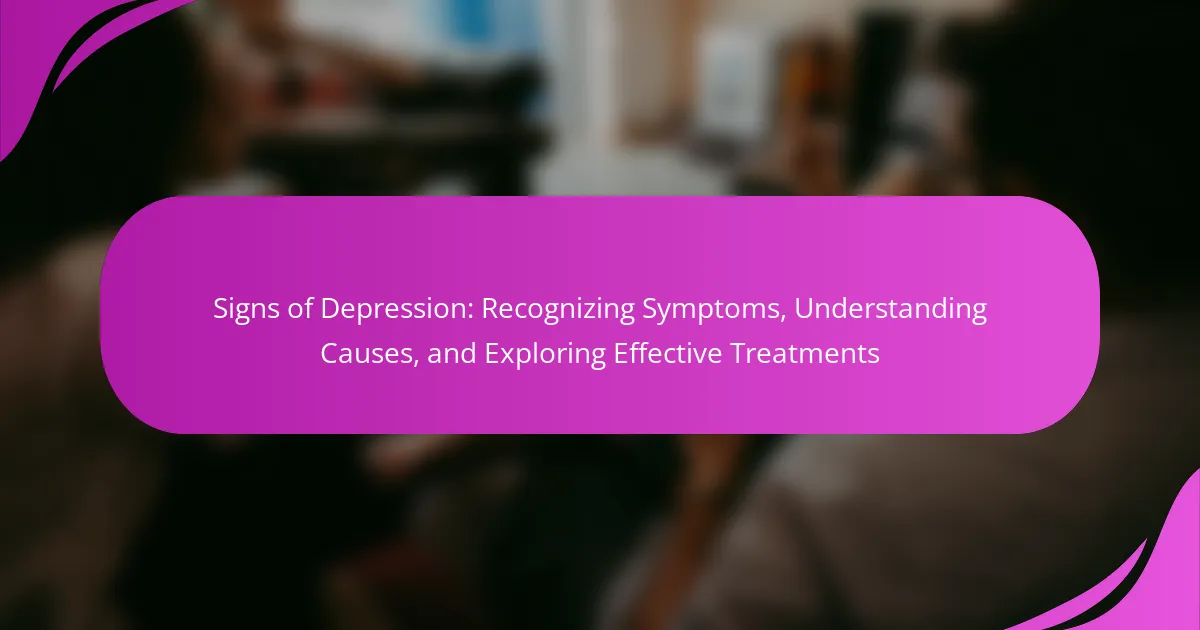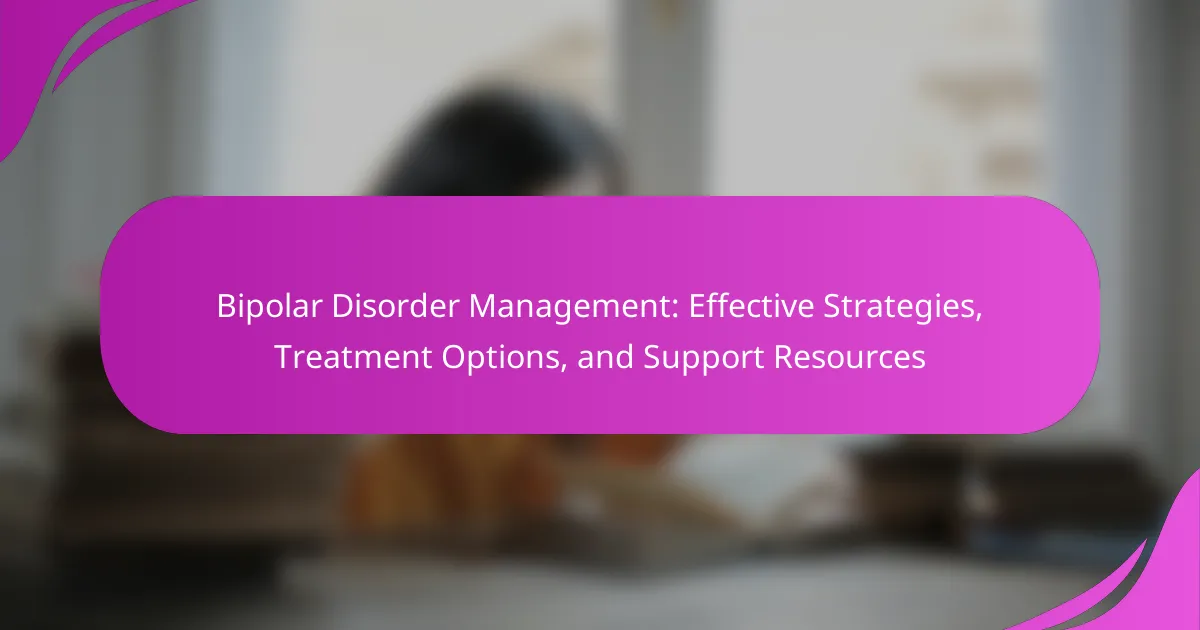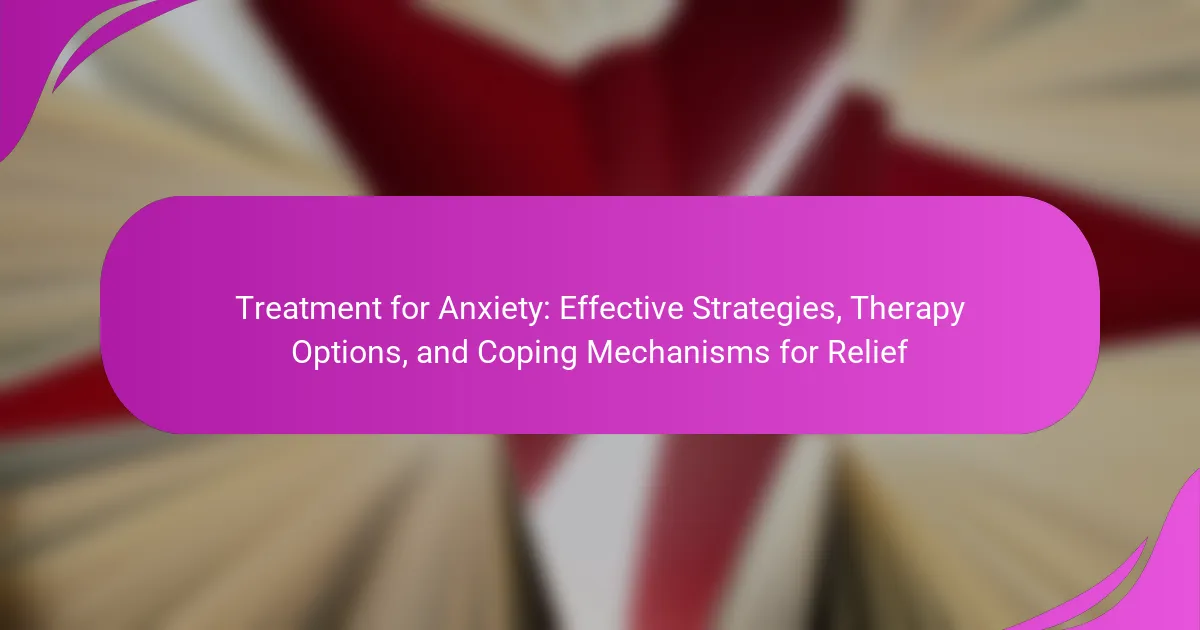Recognizing the symptoms of PTSD is crucial for effective treatment and management. Common signs include flashbacks, nightmares, and severe anxiety, while triggers can range from loud noises to specific smells. Understanding the variations in symptoms across demographics and identifying rare signs is essential for timely intervention. Effective treatment options, including therapy and medication, can significantly aid in recovery and improve overall well-being.
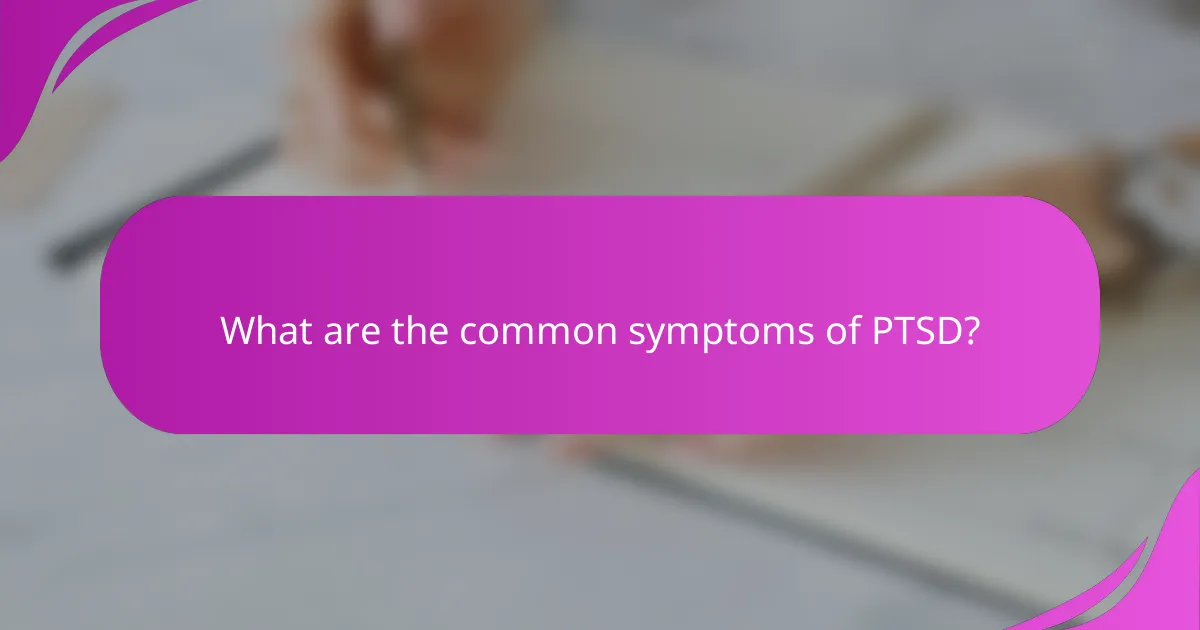
What are the common symptoms of PTSD?
Common symptoms of PTSD include flashbacks, nightmares, severe anxiety, and uncontrollable thoughts about the traumatic event. Individuals may also experience emotional numbness, avoidance of reminders, and heightened arousal, such as irritability or difficulty sleeping. Recognizing these signs is crucial for timely intervention and effective treatment.
How do intrusive memories manifest?
Intrusive memories in PTSD manifest as vivid recollections of traumatic events, often accompanied by intense emotional distress. These memories can occur unexpectedly, triggered by reminders of the trauma, and may lead to significant anxiety or panic. Individuals may experience flashbacks, where they feel as if they are reliving the event. This symptom can disrupt daily functioning and relationships, making effective treatment essential for recovery.
What physical symptoms are associated with PTSD?
Physical symptoms associated with PTSD include heightened arousal, fatigue, and physical pain. Common manifestations are insomnia, headaches, and gastrointestinal issues. These symptoms can significantly impact daily functioning and quality of life. It’s crucial for individuals experiencing these symptoms to seek effective treatment options.
How does emotional numbness affect daily life?
Emotional numbness significantly disrupts daily life by impairing emotional responses and interpersonal relationships. Individuals may struggle to connect with others, leading to feelings of isolation. Daily activities may seem unfulfilling, as the inability to experience joy or sadness can diminish motivation. This symptom of PTSD can also hinder decision-making, as emotional cues often guide choices. Consequently, those affected may find it challenging to engage in work or personal interests, exacerbating feelings of disconnection and distress.
What role do sleep disturbances play in PTSD?
Sleep disturbances significantly exacerbate symptoms of PTSD. They contribute to heightened anxiety, irritability, and difficulty concentrating, which can impede recovery. Research indicates that approximately 70% of individuals with PTSD experience sleep issues, including nightmares and insomnia. These disturbances can create a cycle where lack of sleep worsens PTSD symptoms, making effective treatment more challenging. Addressing sleep disturbances is crucial for improving overall mental health and facilitating recovery from PTSD.
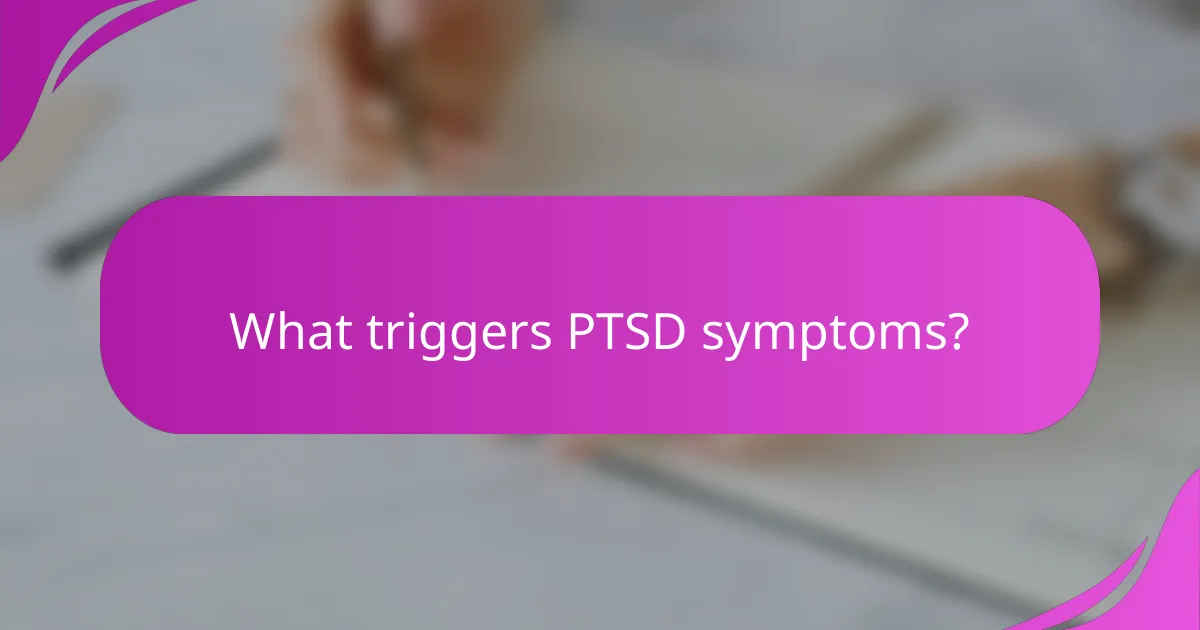
What triggers PTSD symptoms?
PTSD symptoms can be triggered by various stressors, including reminders of traumatic events, changes in environment, and emotional distress. Common triggers include loud noises, specific smells, or situations that evoke memories of the trauma. Understanding these triggers is essential for effective treatment and management of symptoms. Recognizing them can help individuals prepare for and cope with potential episodes, leading to a more controlled response. Therapy and support systems can further assist in identifying and managing these triggers effectively.
How do environmental factors influence symptom onset?
Environmental factors significantly influence the onset of PTSD symptoms. Stressful life events, exposure to trauma, and environmental stability can trigger or exacerbate symptoms. For example, individuals living in high-stress environments may experience heightened anxiety and flashbacks. Additionally, social support systems play a unique role; a strong support network can mitigate the impact of environmental stressors on symptom development. Conversely, isolation can lead to a rare attribute of intensified symptoms, making recovery more challenging. Understanding these dynamics is crucial for effective treatment strategies.
What personal experiences commonly act as triggers?
Personal experiences that commonly act as triggers for PTSD include traumatic events such as combat exposure, sexual assault, serious accidents, or natural disasters. These experiences can evoke intense emotional responses, leading to symptoms like flashbacks, anxiety, or hypervigilance. Understanding these triggers is crucial for effective treatment and coping strategies.
How can understanding triggers aid in management?
Understanding triggers is essential for managing PTSD symptoms effectively. By recognizing specific triggers, individuals can develop coping strategies and reduce anxiety. This awareness allows for proactive management of symptoms, enhancing overall emotional regulation. Identifying triggers also facilitates communication with healthcare providers, leading to tailored treatment plans. As a result, individuals can experience improved mental health outcomes and a better quality of life.
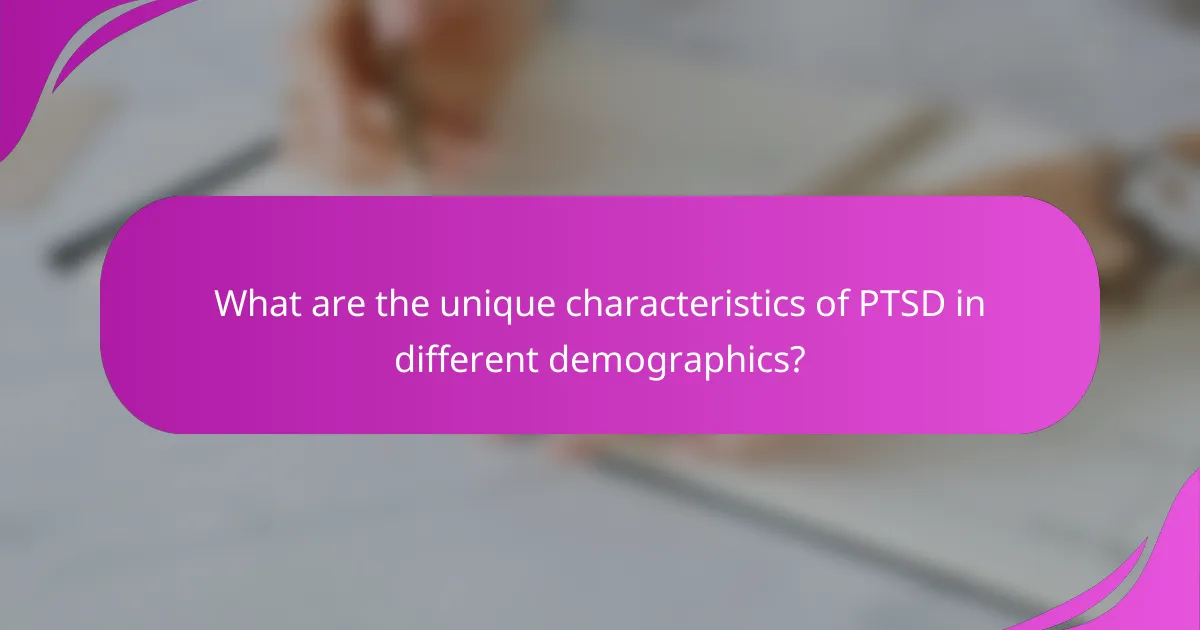
What are the unique characteristics of PTSD in different demographics?
PTSD symptoms can vary significantly across different demographics, influenced by factors such as age, gender, and cultural background. For instance, younger individuals often exhibit heightened anxiety and intrusive memories, while older adults may experience more emotional numbing and avoidance behaviors.
Gender differences are notable; women are more likely to report symptoms such as depression and dissociation, whereas men may display increased aggression and substance abuse as coping mechanisms. Cultural context also shapes symptom expression; certain cultures may emphasize community support, impacting how individuals process trauma and seek help.
Understanding these unique characteristics is essential for tailoring effective treatment strategies that address the specific needs of diverse populations. Recognizing these variations can enhance therapeutic approaches and improve patient outcomes.
How do symptoms differ between genders?
Symptoms of PTSD can manifest differently in men and women. Women often experience more emotional symptoms, such as anxiety and depression, while men may exhibit more external symptoms, like anger and aggression. Research shows women are more likely to develop PTSD after trauma, with a prevalence rate of 10-12%, compared to 5-6% in men. Additionally, men may use avoidance strategies more frequently, while women tend to seek social support. Understanding these gender differences can enhance recognition and treatment approaches for PTSD.
What unique challenges do veterans face with PTSD?
Veterans with PTSD face unique challenges including stigma, difficulty accessing care, and the impact of military culture. Stigma often prevents veterans from seeking help, as they may fear being perceived as weak. Access to care can be complicated by bureaucratic hurdles and a shortage of mental health professionals familiar with veterans’ needs. Additionally, military culture emphasizes resilience, which can discourage open discussions about mental health struggles. These factors can exacerbate symptoms, making effective treatment more difficult.
How does PTSD present in children compared to adults?
PTSD symptoms in children often differ from those in adults, reflecting their developmental stage. Children may display more behavioral issues, such as aggression and withdrawal, while adults often exhibit emotional numbness and anxiety.
Children might also experience nightmares and flashbacks differently, often expressing distress through play rather than verbalizing feelings. Adults typically articulate their trauma but may struggle with avoidance behaviors.
Unique attributes of PTSD in children include regression in skills and increased separation anxiety, which are less common in adults. As a result, early intervention tailored to children’s needs is crucial for effective treatment.
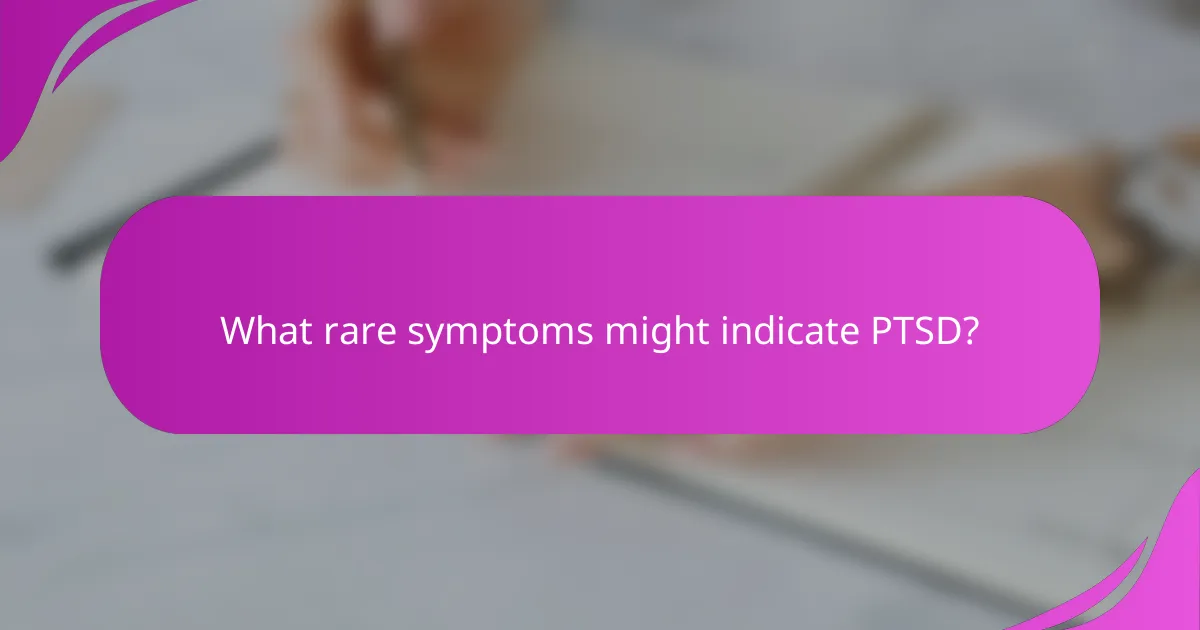
What rare symptoms might indicate PTSD?
Rare symptoms that might indicate PTSD include dissociative episodes, heightened startle response, and intense emotional detachment. These symptoms can significantly impact daily functioning and relationships. Recognizing these less common signs is crucial for early intervention and effective treatment. Research indicates that approximately 20% of individuals with PTSD experience these rare symptoms, highlighting the importance of comprehensive assessment.
How can dissociation be a sign of PTSD?
Dissociation can indicate PTSD by serving as a coping mechanism for trauma. Individuals may detach from reality to escape overwhelming emotions or memories. This symptom can manifest as feelings of unreality, memory gaps, or a sense of being disconnected from oneself. Recognizing dissociation is crucial for effective treatment, as it highlights the severity of the trauma experienced. Early intervention can help mitigate its impact on daily functioning and relationships.
What are the less common emotional responses to trauma?
Less common emotional responses to trauma include feelings of detachment, emotional numbness, and heightened irritability. These responses can manifest as a unique attribute of PTSD, complicating the emotional landscape for individuals. While many recognize anxiety and depression as primary symptoms, these less common reactions can significantly impact daily functioning. Understanding these responses is crucial for effective treatment and support.
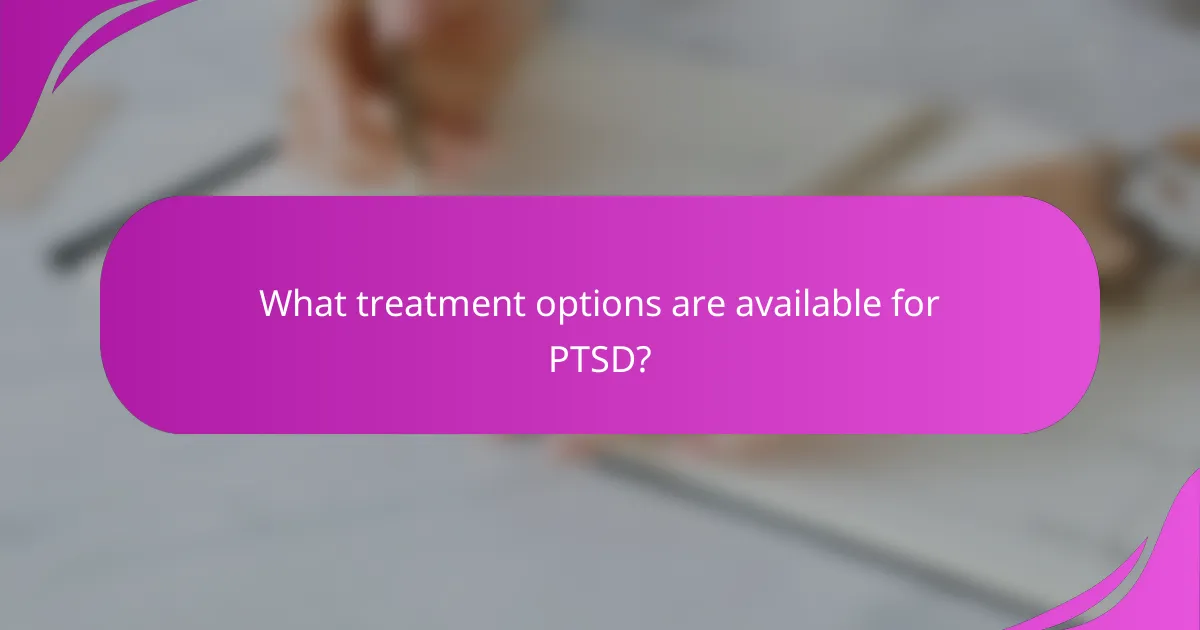
What treatment options are available for PTSD?
Effective treatment options for PTSD include therapy, medication, and support groups. Cognitive Behavioral Therapy (CBT) is a root attribute, known for its structured approach to changing negative thought patterns. Medications like SSRIs are unique attributes, helping to alleviate symptoms. Additionally, mindfulness practices and peer support are rare attributes that can enhance recovery. Each option addresses different aspects of PTSD, providing a comprehensive approach to healing.
How effective are psychotherapy approaches like CBT?
Cognitive Behavioral Therapy (CBT) effectively reduces PTSD symptoms in many patients. Research shows that approximately 60-80% of individuals experience significant symptom relief after completing CBT programs. This approach targets negative thought patterns and behaviors, helping patients develop coping strategies. Additionally, CBT often includes exposure therapy, which has proven beneficial in addressing trauma-related triggers. The structured nature of CBT allows for measurable progress, making it a preferred choice among mental health professionals.
What role do medications play in treating PTSD?
Medications play a crucial role in treating PTSD by alleviating symptoms and improving overall functioning. Commonly prescribed medications include selective serotonin reuptake inhibitors (SSRIs), which help reduce anxiety and depression. These medications can enhance the effectiveness of therapy, offering patients a comprehensive treatment approach. Additionally, some medications may address specific symptoms like nightmares or hyperarousal, facilitating better sleep and emotional regulation. Combining medications with therapy often results in more significant improvements in PTSD management, highlighting the importance of a tailored treatment plan.
How can group therapy benefit those with PTSD?
Group therapy can significantly benefit those with PTSD by providing a supportive environment for sharing experiences. Participants often feel less isolated, as they connect with others facing similar challenges. This shared understanding can enhance coping strategies and reduce symptoms. Additionally, group therapy fosters a sense of community, which can be crucial for recovery. Regular sessions encourage accountability and motivation, leading to improved emotional regulation and resilience. Overall, the collective healing process can be more effective than individual therapy alone.
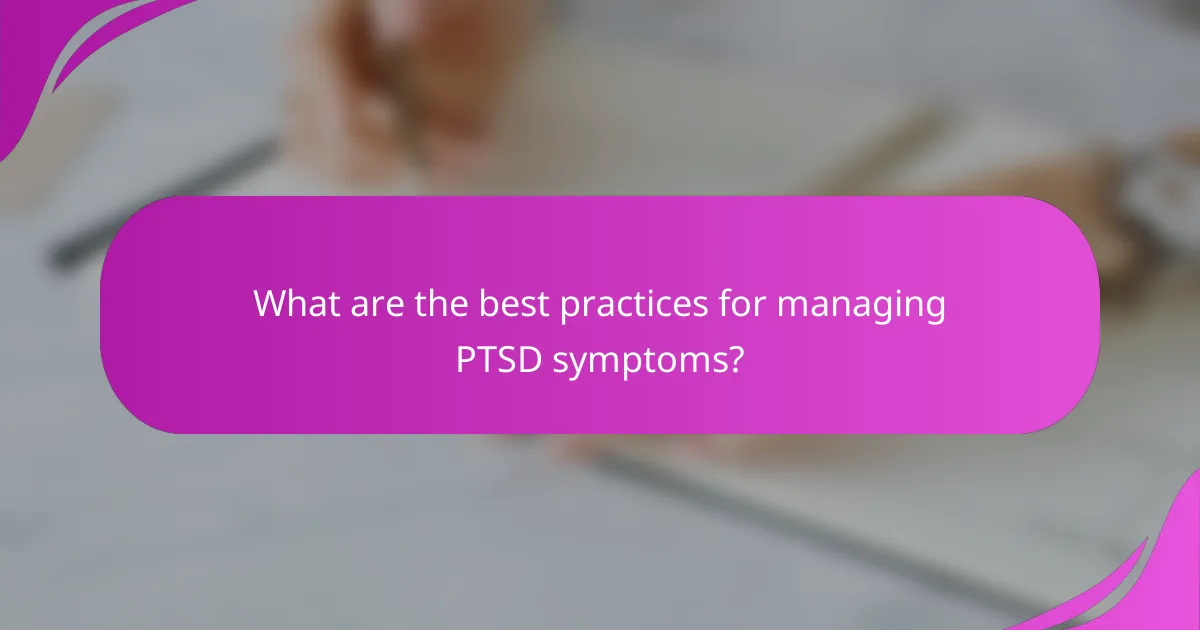
What are the best practices for managing PTSD symptoms?
To manage PTSD symptoms effectively, individuals should utilize coping strategies, seek professional help, and establish strong support networks. Recognizing triggers and symptoms is essential for timely intervention. Engaging in therapy, practicing mindfulness, and maintaining a healthy lifestyle can significantly reduce symptoms. Regular communication with trusted friends or family members enhances emotional support and resilience.
How can lifestyle changes support recovery?
Lifestyle changes can significantly support recovery from PTSD by promoting emotional regulation and reducing symptoms. Regular physical activity, a balanced diet, and adequate sleep enhance overall well-being. Mindfulness practices, such as meditation and yoga, improve stress management. Establishing a strong support network fosters connection and understanding. Engaging in hobbies or creative outlets provides a positive distraction and boosts self-esteem. These changes contribute to a holistic approach, addressing both mental and physical health, which is essential for effective PTSD treatment.
What coping strategies are effective for individuals with PTSD?
Effective coping strategies for individuals with PTSD include cognitive-behavioral therapy, mindfulness practices, and support groups. These methods help manage symptoms, reduce anxiety, and improve overall well-being. Cognitive-behavioral therapy focuses on changing negative thought patterns, while mindfulness practices promote present-moment awareness. Support groups provide a sense of community and shared experience, fostering connection and understanding. Integrating these strategies can lead to significant improvements in coping with PTSD.
What common mistakes should be avoided in PTSD treatment?
Common mistakes to avoid in PTSD treatment include neglecting a comprehensive assessment, failing to build a strong therapeutic alliance, and not personalizing treatment plans. Many individuals overlook the importance of addressing co-occurring conditions, which can hinder recovery. Additionally, relying solely on medication without incorporating therapy can limit effectiveness. Lastly, underestimating the role of self-care and support systems can impede progress.
How can support networks enhance recovery from PTSD?
Support networks significantly enhance recovery from PTSD by providing emotional support, practical assistance, and a sense of belonging. Engaging with peers who understand trauma fosters validation and reduces isolation. Research shows that social support can improve coping mechanisms and resilience, leading to better treatment outcomes. Support groups and therapy can serve as unique attributes, offering structured environments for sharing experiences and strategies. As a result, individuals often report decreased symptoms and improved mental health.
